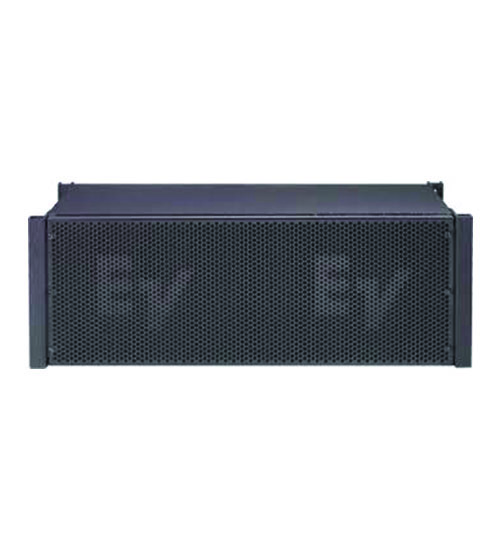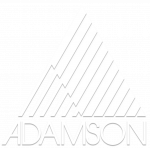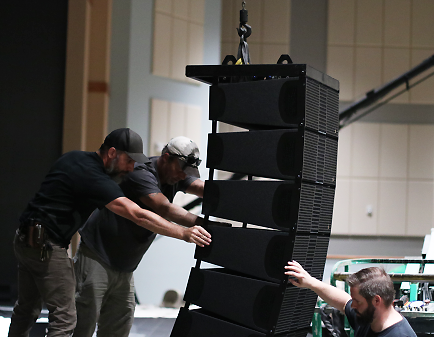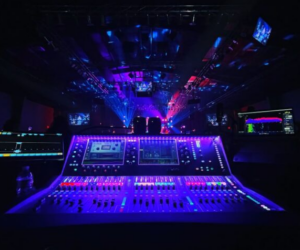The characteristics that qualify a line array as medium format, as opposed to small or large format, is somewhat arbitrary. For this overview, we’ve based the selection on the size of the largest driver in the array, considering those with 8-inch to 10-inch cones to be medium format.
In comparison to enclosures with 12-inch or 15-inch LF drivers, smaller enclosures generally allow wider splay angles within the array elements, which can be helpful for applications where long lines of loudspeakers aren’t feasible because of weight or sightline restrictions.
Further, they’re designed to be flown and taken down quickly, often in “blocks” of individual modules, and to be flexibly adjustable to different splay angles – and many can also be groundstacked. This flexibility can be particularly useful in venues where arrays need to be adjusted regularly to accommodate different types of acts.
Within the medium-format category, there’s a lot of variety. Among the represented brands and models in the listings that follow, the horizontal coverage angle varies from 80 degrees to 150 degrees from a single array column, with most ranging between 100 to 120 degrees. Some manufacturers also offer cabinets with the same “footprint” with differing horizontal coverage, allowing the user to better customize coverage for a particular venue.
Enclosure width varies from a bit over 23 inches to more than 30 inches, and weight for each cabinet ranges from slightly more than 30 pounds to over 100 pounds. Many are self-powered, and others have dedicated external processing and amplification.
Most of these systems use one to two cone drivers to produce the lowest frequencies, and sometimes will roll off the upper frequencies of one LF driver while allowing the other to cover the midrange. HF is covered by a compression driver, or occasionally a ribbon driver, with pattern control via a horn or waveguide with a narrow vertical coverage angle. Thus a 3-way system is effectively created, with the coupling of the two cones effectively creating a larger LF radiating surface. (This is sometimes called a “2.5-way.”)
The following Real World Gear overview of recent models covers a variety of designs based around 8- to 10-inch LF components. It’s not all inclusive but is meant as a solid starting point for further homework. Enjoy the tour.
ENHANCED LISTING

Adamson Systems Engineering CS10
adamsonsystems.com
The CS10 is a two-way, full-range intelligent line array intended for use in a wide variety of applications. Utilizing Adamson’s proprietary network platform, it employs a redundant MILAN scheme with the ability to daisy-chain networked audio between multiple sources, an analog XLR input and output, as well as on-board DSP and amplification. All features of the loudspeaker are controlled and monitored through proprietary CS software.
Acoustically, the CS10 contains dual 10-inch Kevlar Neodymium transducers and a 4-inch compression driver. The critically optimized sound chamber produces a slightly curved wavefront with a nominal dispersion pattern of 110 x 10 degrees (H x V). The chamber’s efficiency allows for increased vertical dispersion without sacrificing high frequency presence in the far field. Patented Controlled Summation Technology further eliminates low-mid lobing normally associated with 2-way line source systems.
The cabinet construction uses marine grade birch plywood as well as aircraft grade steel and aluminum and is equipped with a male and female XLR connector, two etherCON connections and an in-and-through powerCON TRUE1 connection.
TECHNOLOGY FOCUS: The series includes the CS Gateway, a 16 x 16 matrix with 16 channels of DSP containing dual-LAN, Milan-ready AVB, AES/EBU, and analog connections; the NDS network and analog patch bay that sends redundant audio and control on a single network cable; the PDS that insures all systems receive ample power regardless of region; and the CS Bridge to integrate the CS-Series into existing inventories by converting dual-LAN, Milan-ready AVB signal to AES/EBU while also offering six channels of DSP per unit.
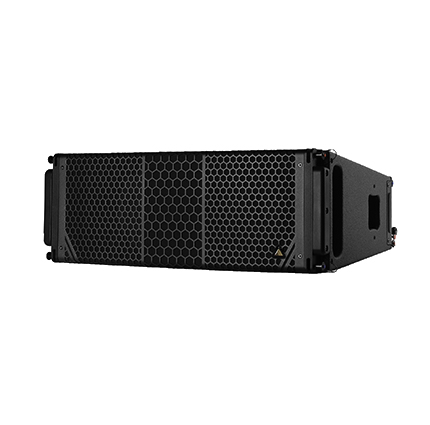
OF NOTE: CS-Series loudspeakers offer the same form factors as their S-Series counterparts, and their compatible sonic signatures are designed to be uniform to help ensure scalable configurations. A turnkey Upgrade Kit allows any existing S-Series cabinet to be easily converted to a CS model.
KEY SPECS
Configuration: 2-way
LF: 2 x 10-inch Kevlar neodymium cone drivers
HF: 1 x 4-inch neodymium diaphragm compression driver
Usable bandwidth: 60 Hz – 18 kHz
Maximum SPL: 141.2 dB
Nominal directivity: 110 degrees (h) x 10 degrees (v)
Rigging: Nine positions allow vertical inter-cabinet splay angles from 0 to 10 degrees
Power: 2-channel class-D, 2,400 watts total
Weight: 68.4 pounds
Size: 10.4 (h) x 29 (w) x 20.7 (d) inches
L-Acoustics Kara II
l-acoustics.com
Configuration: 2-way
LF: 2 x 8-inch neodymium weather-resistant cone drivers
HF: 1 x 3-inch neodymium diaphragm compression driver
Usable bandwidth: 55 Hz – 20 kHz (Kara II 70)
Maximum SPL: 142 dB
Nominal directivity: 70/110-degree symmetric or 90 degrees (horizontal); vertical dependent upon number of elements and curvature
Rigging: Angle increments 0, 1, 2, 3, 5, 7.5, and 10 degrees
Power: L-Acoustics LA4/LA8/LA12X amplified controllers
Weight: 57 pounds
Size: 9.9 (h) x 28.9 (w) x 19 (d) inches
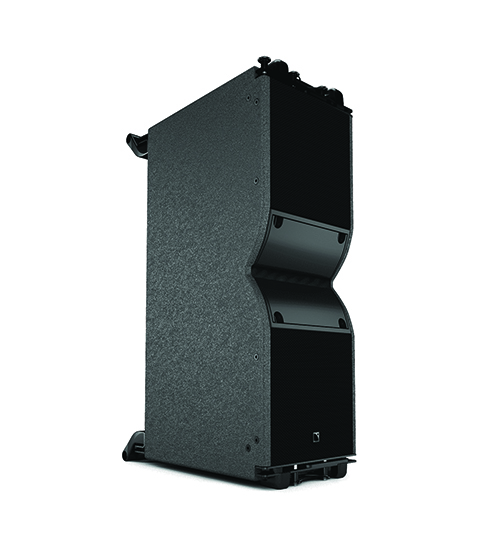
RCF HDL 28-A
rcf-usa.com
Configuration: 2-way
LF: 2 x 8-inch neodymium cone drivers
HF: 1 x 3-inch voice coil titanium compression driver on custom time-coherent waveguide
Frequency Response:
50 Hz – 20 kHz
Dispersion: 100 (h) x 15 (v) degrees
Rigging: Adjustable in numerous increments
Power: Self-powered (bi-amp, class D), rated at 2,200 watts peak, proprietary FiRPHASE DSP
Weight: 45.4 pounds
Size: 14.8 (h) x 25.6 (w) x 19.7 (d) inches
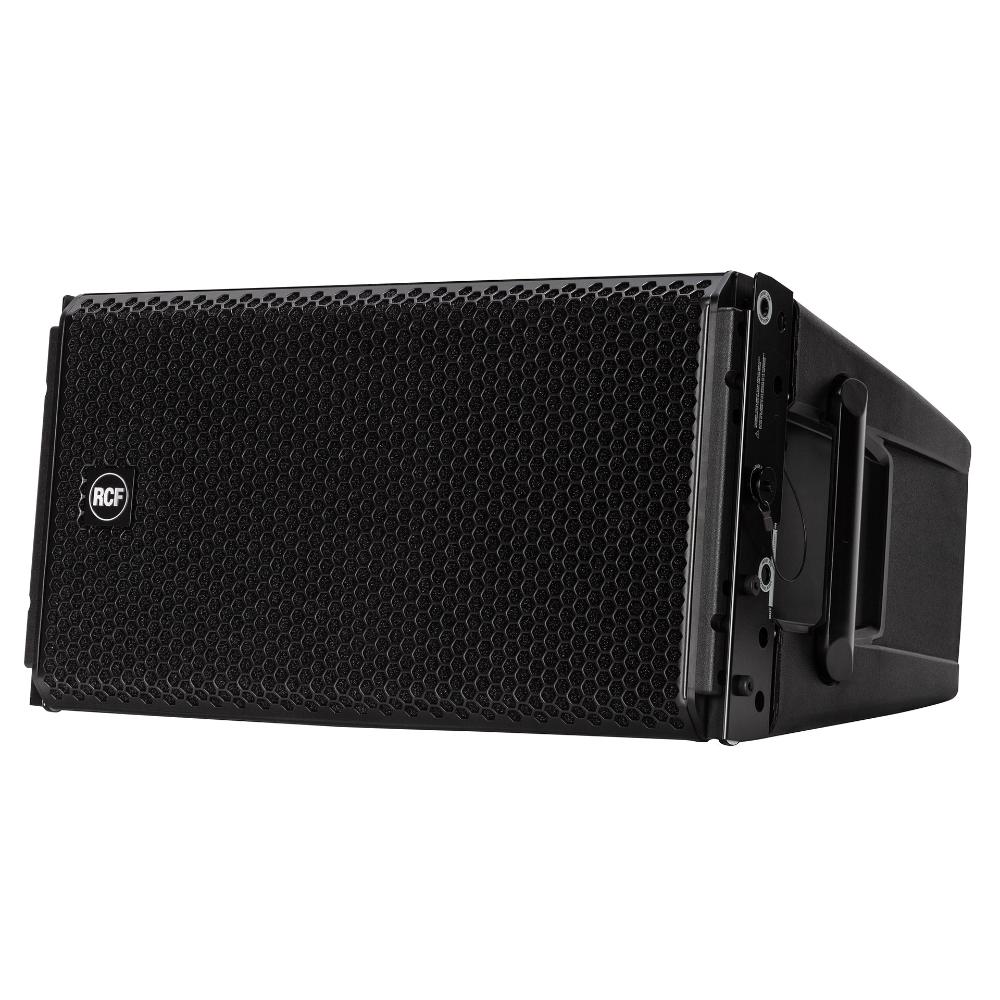
Meyer Sound LINA
meyersound.com
Configuration: 2-way
LF: 2 x 6.5-inch neodymium cone drivers
HF: 3-inch diaphragm high-frequency compression driver
Usable bandwidth:
65 Hz – 18 kHz
Maximum SPL: 138 dB
Nominal directivity: 100 degrees horizontal
Rigging: QuickFly rigging with captive GuideALinks for esetting of splay angles from 1 tp 11 degrees
Power: 3-channel class-D, 1950 watts total
Weight: 43 pounds
Size: 8.4 (h) x 20.3 (w) x 15.3 (d) inches
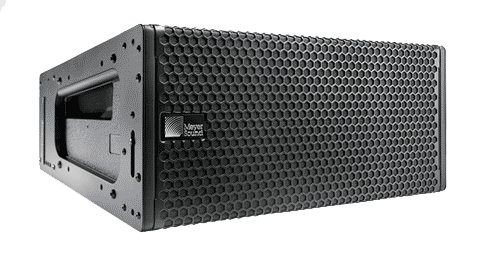
K-array Mugello-KH2P I
k-array.com
Configuration: 2-way
Dispersion (h x v): 110 x 20 degrees (vertical is digitally adjustable in array)
LF: 2 x 8-inch neodymium cone drivers (2.5-inch voice coils)
HF: 2 x 2.5-inch voice coil neodymium compression drivers
Frequency Response:
120 Hz – 19 kHz
Maximum SPL: 142 dB
Power: Bi-amp – HF 250 watts peak/16 ohms, LF 1200 watts peak/8 ohms
Rigging: Numerous rigging options and accessories are offered
Size (h x w x d): 14.6 x 33.8 x 8.3 inches
Weight: 53 pounds (with rigging hardware)
Companion Sub: KS3P (21-inch)
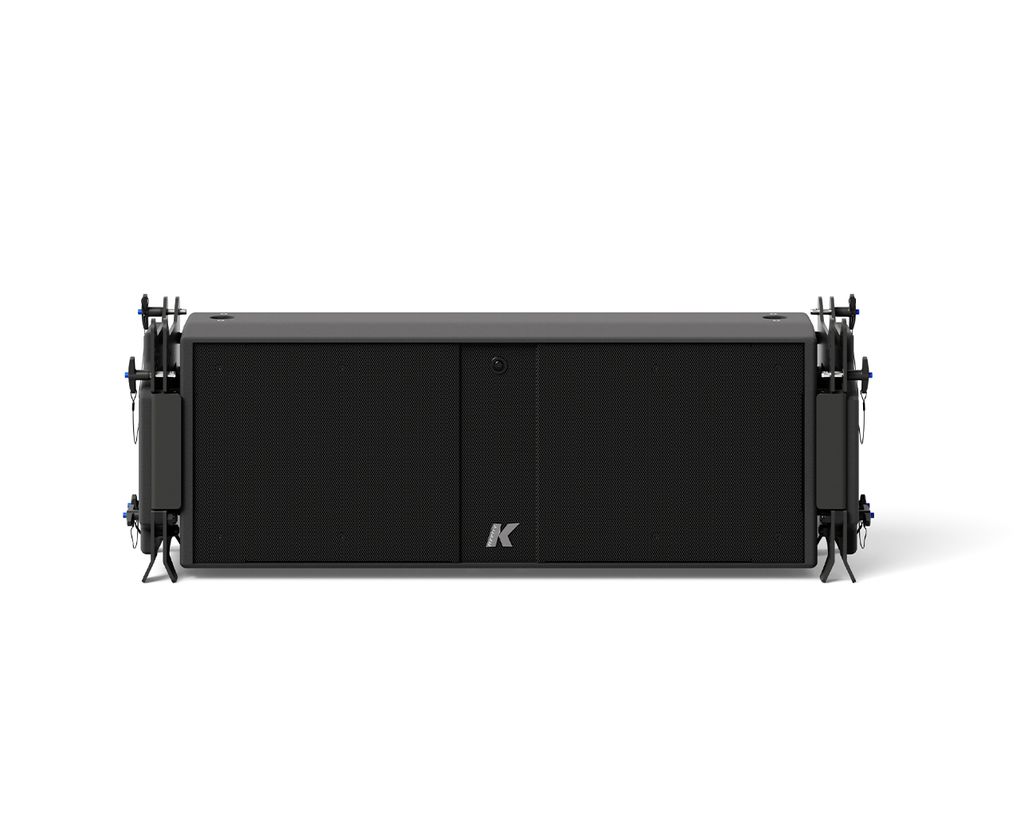
d&b audiotechnik KSL8/KSL12
dbaudio.com
Configuration: 3-way
Dispersion (h): 80 degrees (KSL8), 120 degrees (KSL12)
LF: 2 x 10-inch cone drivers, 2 x 8-inch cone drivers
MF: 1 x 8-inch cone driver
HF: 2 x 1.4-inch-exit (3-inch voice coil) compression drivers mounted to a wave-shaping device
Frequency Response: 54 Hz – 18 kHz
Maximum SPL: 144 dB
Power: D80 and D40 amplifiers, both with DSP
Rigging: 0 to 10 degrees, adjustable in 1-degree increments
Size (h x w x d): 13 x 39.4 x 23.5 inches
Weight: 128 pounds
Companion Sub: KSL-SUB and KSL-GSUB (both are cardioid)
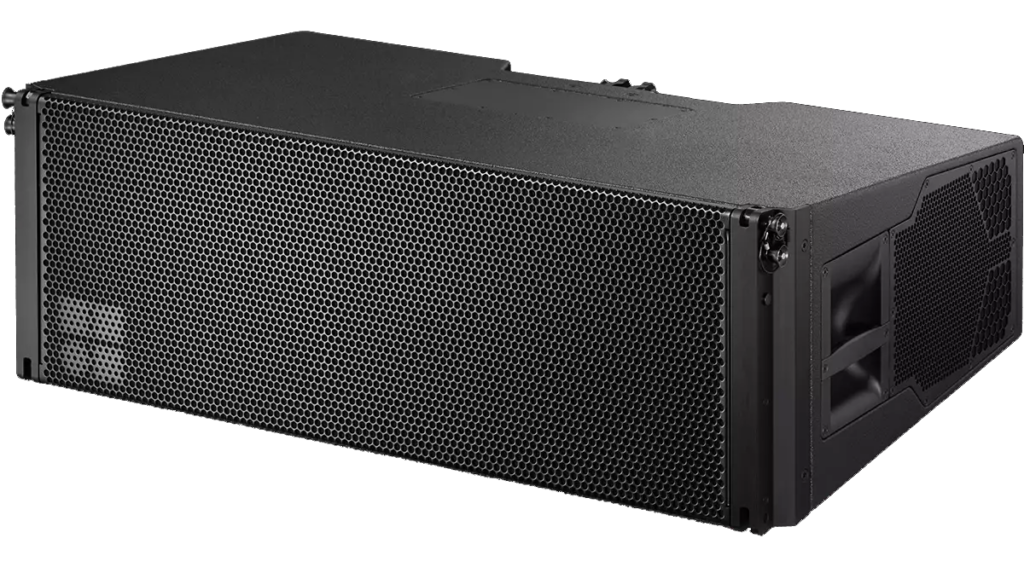
Martin Audio WPS
martin-audio.com
Configuration: 3-way
Dispersion: (h x v): 100/120 degrees horizontal (-6 dB/-10 dB), 10 degrees vertical
LF: 2 x 8-inch Hybrid slot horn loaded
MF: 4 x 4-inch neodymium magnet, horn loaded
HF: 4 x 1-inch neodymium magnet, horn loaded
Frequency Response: 70 Hz – 18 kHz
Power: iKON iK42 amplifier
Rigging: Integral 3-point flying systems for up to 24 enclosures (touring) and 16 enclosures (installation)
Size (h x w x d): 10.3 x 25.6 x 16.8 inches
Weight: 60 pounds
Companion sub: SX Series
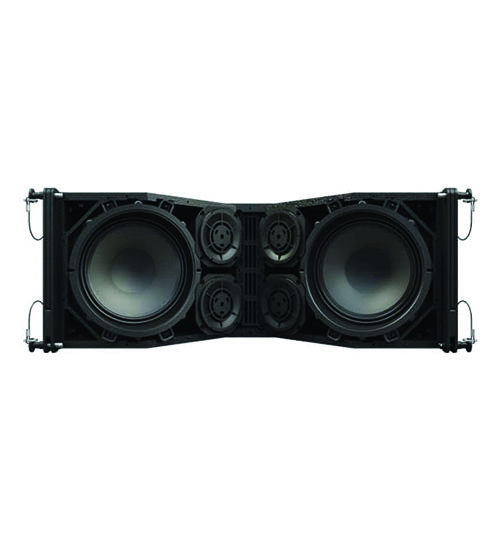
Renkus-Heinz VARIA VA101
renkus-heinz.com
Configuration: 2-way
Dispersion (h x v): 90 (also 60 & 120) x 7.5 (also 15 & 22.5) degrees
LF: 1 x 10-inch cone driver
HF: 2 x 1-inch neodymium drivers on proprietary Tuned Conic Diverter waveguide
Frequency Response: 60 Hz – 20 kHz
Power: Class D biamp (500 watts LF, 250 watts HF) with integrated RHAON networking; passive version also available
Rigging: Articulated hardware provides adjustment from 0 to 7.5 degrees
Size (h x w x d): 13 x 23.7 x 15 inches
Weight: 64 pounds
Companion Sub: VA15S (15-inch)
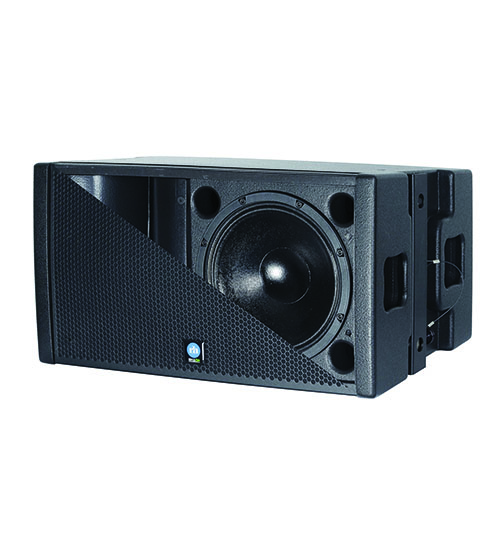
Electro-Voice XLD281
electrovoice.com
Configuration: 3-way
Dispersion (h x v): 120 degrees x 10 degrees (90-degree horizontal also available)
LF: 1 x 8-inch neodymium cone driver
LF/MF: 1 x 8-inch neodymium cone driver
HF: 2 x 2-inch (voice coil) compression drivers
Frequency Response: 75 Hz – 18 kHz
Power: LF/MF power handling – each 200 watts continuous/800 watts peak; HF power handling – 80 watts continuous/320 watts peak; biamp – 800 watts peak
Rigging: Fully captive aluminum, 1-degree increments
Size (h x w x d): 9.9 x 28.6 x 14.5 inches Weight: 48 pounds
Companion Sub: XCS312 (triple 12-inch)
